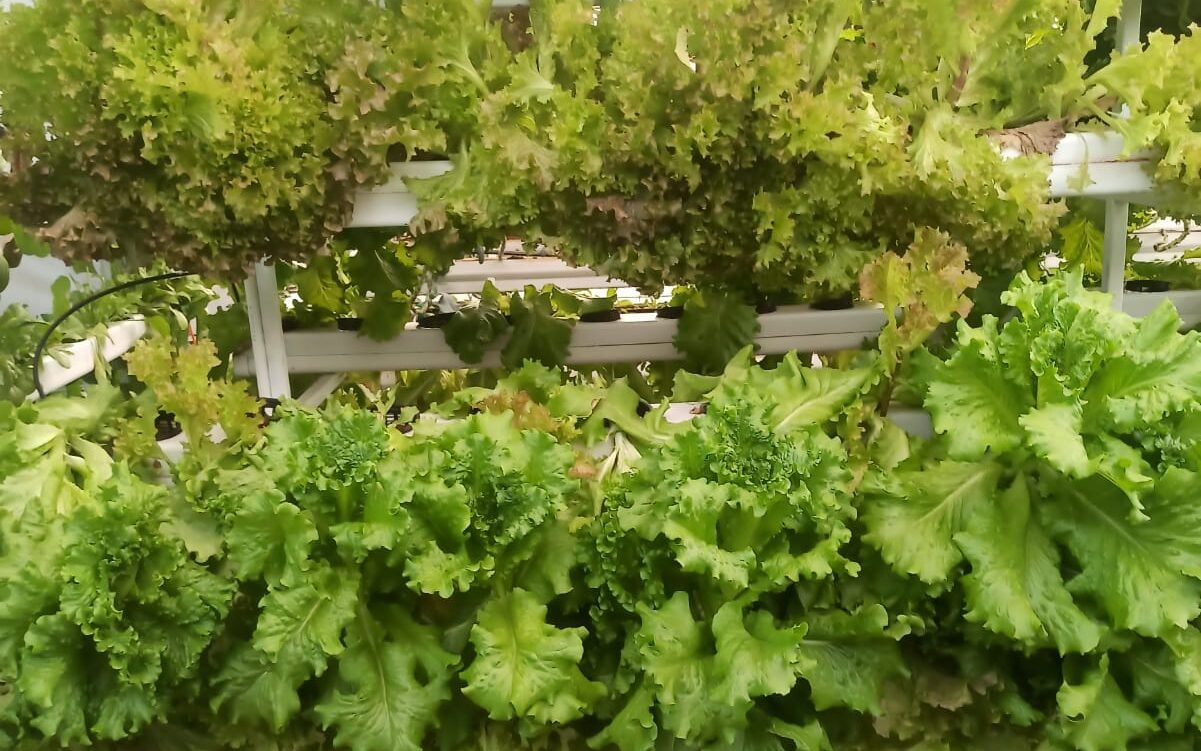
Introduction: Hydroponic farming revolutionizes traditional agriculture by cultivating plants in nutrient-rich water solutions, without the need for soil. Lettuce, with its rapid growth and high demand, serves as an excellent example of hydroponic cultivation. In this guide, we’ll explore the intricacies of growing lettuce hydroponically, covering nutrient management, environmental control, water management, temperature, and profitability.
Nutrient Management: In hydroponic lettuce cultivation, providing the right balance of nutrients is paramount for healthy plant growth. A specialized nutrient solution, containing essential macro and micronutrients, is dissolved in water and continuously circulated to the plant roots. Common hydroponic nutrient formulations for lettuce include nitrogen, phosphorus, potassium, calcium, magnesium, and trace minerals. Regular monitoring and adjustment of nutrient levels ensure optimal plant nutrition throughout the growth cycle.
Environmental Control: Maintaining precise environmental conditions is crucial for successful hydroponic lettuce production. Controlled indoor environments shield crops from adverse weather conditions and pests while optimizing growth parameters. Key environmental factors include light intensity, temperature, humidity, and carbon dioxide levels. LED grow lights simulate natural sunlight, while climate control systems regulate temperature and humidity, creating ideal conditions for lettuce growth year-round.
Water Management: Efficient water management is fundamental in hydroponic farming to conserve resources and maintain system integrity. Recirculating hydroponic systems minimize water usage by continually recirculating nutrient solution through the growing medium. Monitoring water quality and pH levels ensures optimal nutrient uptake and prevents root rot and nutrient imbalances. Additionally, implementing water-saving technologies such as drip irrigation and rainwater harvesting enhances sustainability and reduces operational costs.
Temperature Control: Lettuce thrives in moderate temperatures, making temperature control essential in hydroponic systems. Maintaining temperatures between 60-70°F (15-21°C) during the day and slightly cooler at night promotes optimal growth and prevents heat stress. Climate control systems, including fans, evaporative coolers, and heaters, regulate temperatures within the hydroponic facility, ensuring consistent conditions for lettuce cultivation.
Profitability: Hydroponic lettuce cultivation offers several advantages that contribute to its profitability. By eliminating the need for soil, hydroponic systems optimize space utilization, allowing for higher crop densities and increased yields per square foot. Moreover, precise nutrient delivery and environmental control result in faster growth rates and higher-quality produce, commanding premium prices in the market. Additionally, hydroponic farming reduces water consumption and minimizes environmental impact, further enhancing its economic viability.
Conclusion: Hydroponic farming presents a sustainable and profitable solution for lettuce cultivation, offering precise control over nutrient management, environmental conditions, water usage, and temperature. By leveraging advanced technologies and best practices, growers can optimize lettuce production in hydroponic systems, ensuring year-round supply, superior quality, and economic success.